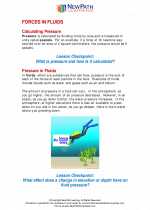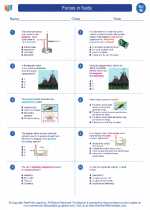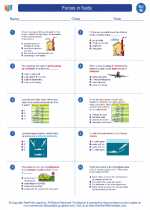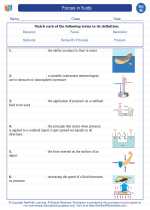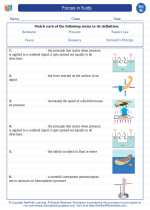Double Replacement Reactions
A double replacement reaction, also known as a double displacement reaction, is a type of chemical reaction where two compounds exchange ions to form two new compounds. This type of reaction typically occurs in aqueous solutions and can be represented by the general equation:
AB + CD → AD + CB
Key Characteristics of Double Replacement Reactions:
- Occur in aqueous solutions where the compounds are dissolved in water.
- Involve the exchange of positive ions (cations) between the two compounds.
- Often produce a precipitate, gas, or water as one of the products.
- Can be represented using ionic equations to show the dissociation of the compounds into ions.
Example of a Double Replacement Reaction:
One example of a double replacement reaction is the reaction between silver nitrate (AgNO3) and sodium chloride (NaCl) to form silver chloride (AgCl) and sodium nitrate (NaNO3):
AgNO3 + NaCl → AgCl + NaNO3
Study Guide for Double Replacement Reactions:
- Understand the concept of ionic compounds and their dissociation in water.
- Learn to identify the cations and anions in compounds to predict the products of double replacement reactions.
- Practice writing balanced chemical equations for double replacement reactions.
- Be familiar with the solubility rules to predict whether a precipitate will form in a double replacement reaction.
- Study specific examples of double replacement reactions and their applications in various chemical processes.
By understanding the principles of double replacement reactions, you can apply this knowledge to predict the products of chemical reactions and understand the formation of new compounds in aqueous solutions.
.